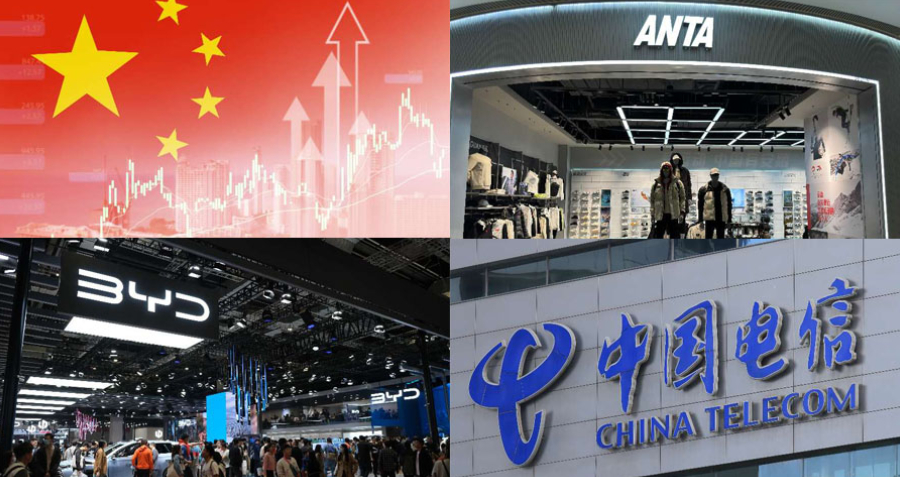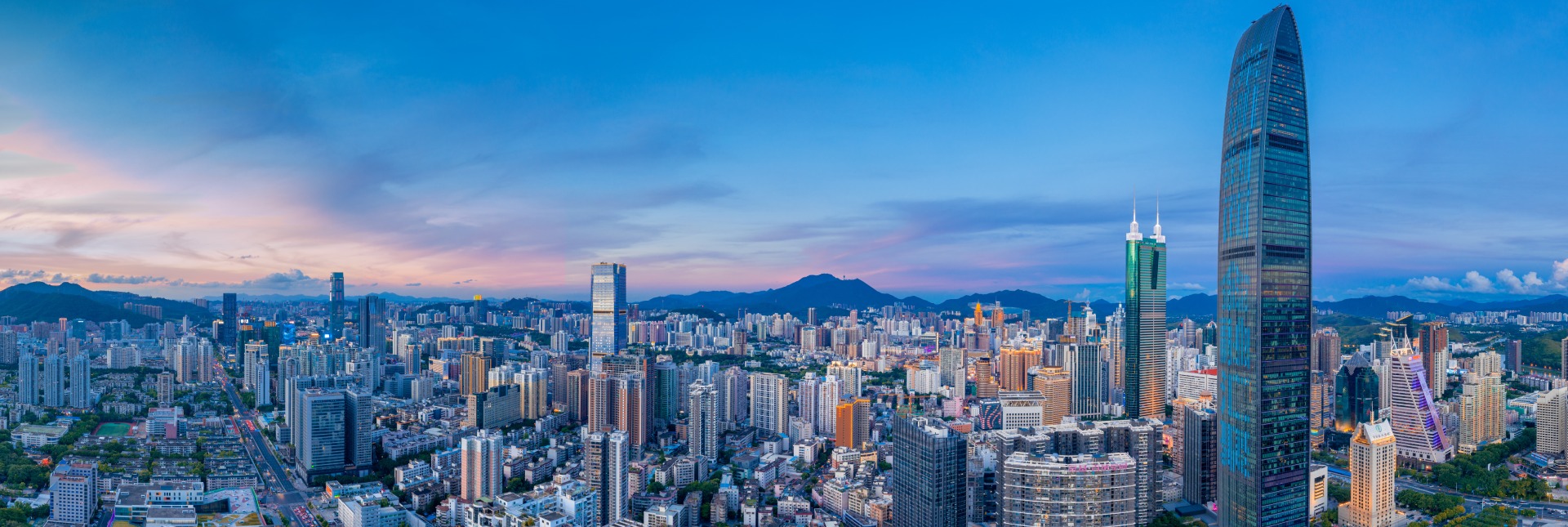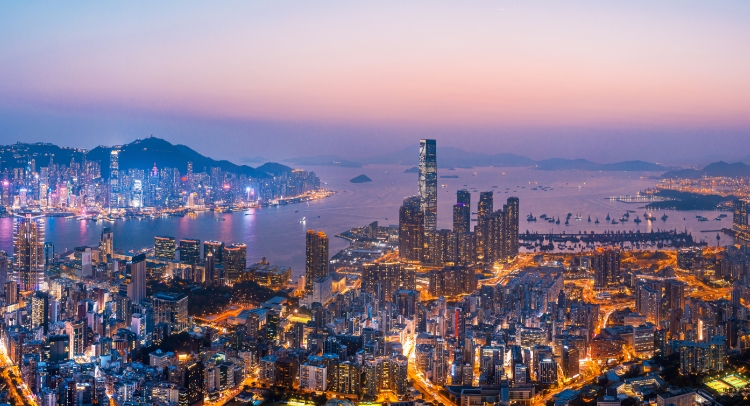Born Global
Founded in 2004, OPPO was originally created within the Chinese multinational electronics conglomerate BBK Electronics’ audiovisual electronics business, with its early products including DVDs and MP3s. The brand has been independent since 2023, when BBK was dissolved.
At the end of 2006, OPPO founder and CEO Chen Mingyong decided to make the switch to mobile phones. In 2008, the company launched its first such phone, the OPPO A103, and by 2011, its first smartphone Find was launched, moving into the era of smart terminals together with the rest of the industry.
While its headquarters are in China, OPPO has, over the years, curated an image of a global brand. As early as 2000, Chen Mingyong wanted to bring the then BBK audiovisual electronics business into the international market, but the BBK brand lacked international communication power when translated into English.
But, with an emphasis on making the brand name easy to pronounce and other semantics in different markets, after hiring an international branding team to sculpt the brand’s image to suit countries around the world, the OPPO name began to register on the global stage.
In 2004, OPPO set up OPPO Digital in Silicon Valley to leverage the leading image extraction and restoration technologies there, and specialize in the development of HD DVDs and other products. Successive launches were well-received by US consumers, and in 2008, OPPO introduced these critically acclaimed products back in China.
In 2009, after launching its first mobile phone, OPPO, starting in Thailand, began a new period of globalization. Initially, OPPO simply exported mobile phones to its DVD distributor in Thailand, who sold both DVDs and mobile phones. The company did not yet have a clear strategy for overseas markets, making low-level investments and taking limited risks.
In 2011, smartphones began to enter the China market, and the following year, OPPO launched Finder, then the world’s thinnest smartphone. In 2013, OPPO’s ColorOS operating system, which is based on Android and draws from its deep customization qualities, was born, and the company’s trinity of “software, hardware and services” was established. It was also at this time, with the accumulation of product capabilities, combined with changes in the external environment, OPPO began to formally consider the idea of overseas expansion for the mobile phone business.
In 2013, OPPO began to expand further into the Southeast Asian market with Indonesia and Vietnam as initial targets, followed by India and other countries the following year. By 2018, OPPO had become the dominant brand in the Southeast Asian market, forming something of a duopoly with Samsung. In Q3 2018, OPPO became the only brand to rank among the top three in terms of shipments in all five of the markets in Indonesia, Philippines, Vietnam, Thailand and Malaysia. In the same year, OPPO released its flagship smartphone OPPO Find X, which combined a number of innovative technologies, at the Louvre in France, and announced that it had officially entered the European market, beginning a new stage of the company’s globalization. OPPO entered the Mexican market in 2020.
OPPO’s brand has now spread over five continents and as of October 2024, OPPO is present in more than 70 countries and regions, with units for sale in over 300,000 retail shops worldwide, has created more than 3,300 self-operated offline after-sales service shops, and overseas shipments account for about 60% of the total.
Canalys data shows that in Q2 2024, OPPO ranked second in the mainland China market; first in Vietnam, Thailand and Cambodia, and second in Indonesia; fourth in the Mexican market; and fifth in the Western European market, and second, third and fourth in Portugal, Finland, and Spain, respectively. Meanwhile, OPPO ranked in the top three in the higher price segment (above $500) in 14 countries, including India, Thailand, Vietnam, New Zealand, Belgium and Portugal.
In addition to strong global sales, after years of knowledge accumulation, OPPO has also reached a high level of global production and R&D. It has established seven manufacturing centers, in India, Indonesia, Turkey, Pakistan, Bangladesh, Brazil and Egypt, to guarantee product quality and ensure a flexible supply using its own factories. OPPO has also set out six research institutes around the world, including the Silicon Valley Research Institute in the US and the Yokohama Research Institute in Japan, to explore future-oriented cutting-edge technologies, and has set up six R&D centers in various locations at home and abroad to improve product quality and experiences.
Globalization has helped OPPO expand its new growth space and diversify away from dependence on a single market, while at the same time acquiring high-quality talent, technology and other resources.
Oppo’s globalization strategy
A positive globalization report card is the result of an effective overall strategy, and the key strategic decisions faced by globalized enterprises include the selection of target markets and the choice of entry modes. At the same time, as the breadth and depth of its overseas business increased, it became important to establish an organizational structure that was appropriate to the overall strategy.
Market Selection
Globalization of enterprises is a gradual process of accumulating knowledge, increasing investment and development. From entering Southeast Asia in 2009 to setting foot in Europe in 2018 and landing in Latin America in 2020, OPPO’s overseas market expansion adopted a pragmatic and progressive approach, from simple markets to difficult. Simplicity in this case means being close to China on a macro level, and at the same time being similar to the Chinese market on an industrial level, as well as being compatible with the core competencies of the company.
Firstly, choosing simple, or markets “close” to China helps to reduce the uncertainty and risk of globalization. Distance here includes a variety of dimensions, including Cultural, Administrative, Geographic and Economic, which form a CAGE distance model. Taking these factors into account, Southeast Asia is relatively close to China and has a favourable business environment.
Secondly, specific to the mobile phone industry, the channel structure of the mobile phone market in many Southeast Asian countries is very similar to that of China, which is an open channel market—as opposed to a carrier market.
Finally, e-commerce channels in countries such as Indonesia started late, and most consumers still buy mobile phones from offline shops. This facilitates OPPO to call on its successful offline channel experience in China and leverage its established competitive advantages to penetrate the target country’s market quickly and efficiently with low learning costs.
Of course, market potential is also a key factor influencing market selection. Southeast Asia has a large population base—the regional population was over 670 million in 2021; a young demographic—regional median age of less than 30 years in 2021; a fast-growing middle class; and a large consumer market potential. At the same time, consumers in emerging markets have relatively little product knowledge and are easily influenced and guided.
Overall, OPPO’s overseas market expansion has evolved through Southeast Asia to Europe to Latin America. The logic behind this was to pick the “low-hanging fruit” first, replicate the successful experience at home in markets that are close to and similar to China’s, increase the scale of the business, and then enter high-potential markets with the overseas operating experience accumulated in the earlier stages. Following this expansion of global brand influence, the business can explore new opportunity markets to open up new growth spaces.
Modes of entry
In addition to target market selection, entry mode decisions—the means by which to enter overseas markets—are another key issue in globalization strategies. The internationalization network theory emphasizes that internationalization depends on the relationships and networks of firms. The internationalization of an enterprise is essentially the process of constructing, maintaining and developing its network of relationships within its international market framework. External relationships are a more significant source of uncertainty than internal ones.
OPPO, in some overseas markets, has adopted a “vendor integration” mode of entry, with OPPO taking on manufacturing responsibilities, and the “vendors” being OPPO’s agents. However, unlike many companies that look for agents locally in the host country, the agents for OPPO’s overseas business actually come from China. In the early days, they were mainly composed of OPPO’s domestic agents, but in the time that followed there were also OPPO’s old employees, domestic suppliers and others who were given the right to represent the company overseas. For example, it is not uncommon for an OPPO employee to be converted into the general manager of an agent and be responsible for an overseas market. OPPO also allows and even encourages agents to recruit people from OPPO headquarters.
Compared with local partners in the host country, OPPO’s overseas business agents that have a stronger internal relationship have the following three characteristics:
For one thing, they tend to have a great abundance of entrepreneurial spirit. Whether it is business people—domestic agents or suppliers etc.—who are already adventurous and pursuing growth, or veteran employees who have been through the entrepreneurial experience, they all understand how to do business and are bold enough to take the plunge. The man who pioneered OPPO’s Indonesia market entry is an excellent example. When mapping out the Indonesian market, he was not fluent in English nor Indonesian, but after only a few months, he was able to communicate with customers in Indonesian.
Secondly, these insiders understand OPPO, as most of them are or have been in OPPO’s business development in China, familiar with its channel construction and marketing methods and come with what can be termed “OPPO experience.”
Third, and most importantly, these insiders identify with OPPO, trust OPPO and even have the same sense of mission with OPPO. In particular, some domestic agents and suppliers have formed great trust in OPPO after a long period of co-operation with the company. And trust is the basis for guaranteeing the long-term firm commitment of all parties to the market.
OPPO’s unique “vendor integration” model has been proven in many countries. For example, when OPPO mobile phones were sold on a trade basis through local agents in Thailand in the early days, the market was lukewarm to the brand, mostly because the original agents’ business philosophy was not in line with OPPO’s. In 2013, OPPO’s Thai market changed its management and boosted its monthly sales from 5,000 units to 80,000 units in just over a year. At the end of 2014, OPPO reorganized the agency model in Thailand from the bottom up, retaining some of the interests of the original agents, who withdrew from day-to-day management and business decision-making, and replaced them with people who understood and identified with OPPO. As a result, in 2015, monthly sales in the Thai market climbed to between 250,000 and 300,000 units.
At the same time, OPPO’s experience shows that overseas markets are diverse and there is a need to avoid becoming a one-trick pony. The mutually beneficial agency system has helped OPPO establish a leading market position in China, and the “vendor integration” entry model has worked well in some markets with similar channel structures to China. However, when removed from the appropriate business environment, companies cannot replicate the original model that they have developed, and should reorganize the resources and capabilities they need. For example, in the European market, consumers are more likely to buy contract mobile phones through carriers than to buy handsets from channels such as branded e-commerce companies. This consumption pattern required OPPO to adopt a different strategy than in the Southeast Asian market, establishing and maintaining stable, long-term relationships with operators to adapt to local consumption habits and market structures.
Organizational management
In the first decade of its globalization, OPPO’s overseas development was quite simplistic, with separate businesses trying to gain a foothold in each market and separated from other international units—sales were the priority. With the growth of the overseas businesses, in addition to the development of markets, the company needed a more thoughtful approach to organizational management.
In 2018, while entering developed markets, OPPO began a new stage of management remediation and global co-ordination, focusing on establishing a global vision and promoting collaborative management. Compared to focusing only on opportunities in a single market, OPPO shifted to considering global market patterns, emphasizing global unity in brand building, organizing R&D from a global perspective, forming a global ethos for operations management, and perfecting its global talent pool.
A solid organizational structure can help ensure the effective implementation of corporate strategy and enable it to move steadily forward on the road to globalization. Currently, OPPO divides its global business into regions, each covering a number of national/regional markets, and appoints business leaders in different regions to form and lead independent management, operation and product teams to adapt to the localized needs of different regional markets.
When an agent first enters the market, OPPO’s regional team will provide its experience to help the agent understand the approach to overseas operations. OPPO’s headquarters, on the other hand, grasps the overall strategic direction of the company and co-ordinates the development among regions. For example, based on the macro environment, OPPO’s headquarters has graded more than 70 countries/regions and determined the key markets to invest in and the corresponding resources to support them.
A certain degree of decentralization is conducive to overseas companies giving full play to their initiatives. At the same time, the head office’s knowledge of overseas markets is relatively poor and often lags behind the frontline teams. Therefore, granting specific management authority to overseas units is also a necessary condition for localization. OPPO insists on deploying local teams market by market, while ensuring centralized coordination, in order to globalize the brand and localize operations.
Localized Operations: The Case of Indonesia
Being locally rooted is the secret to OPPO’s success in conquering markets such as those in Southeast Asia. Selling products is an end result, but companies that want to truly localize their operations need to answer the fundamental question of what they can bring to the region. In the view of OPPO’s managers, doing business overseas is essentially no different from doing business at home—it’s all about providing consumers with good products, bringing profits to partners and providing employees with fulfilling jobs. OPPO’s operations in Indonesia are a typical example of this mindset.
Good products for consumers
A good product is one that meets the real needs of consumers. Starting with the needs of consumers in the host country, OPPO takes user insights as a starting point and combines them with its technical capabilities to provide local consumers with customized and differentiated product experiences. The localization of products for the Indonesian market began with OPPO’s in-depth market insights. When the management team first arrived in Indonesia, it was found that, using after-sales repair data, that despite the large amount of rainfall in Indonesia, water-related issues were not the most significant cause of failure for OPPO mobile phones. What was observed was that many Indonesians would put a disposable waterproof bag over their mobile phones on rainy days, but this would affect the effectiveness and quality of calls. OPPO therefore, added a waterproof optimization treatment to its new products for Indonesia. Another example was the common use of a stylus with phones that had a large folding screen, as well as a thick case, as this was seen as more business-like. As a result, OPPO provided both with certain types of phone units.
In March 2023, OPPO launched the Find N2 Flip, a small folding screen phone in Southeast Asia. Based on user experience requirements, this phone differed from Samsung equivalents, with a more practical large vertical external screen, and a self-developed, more innovative hinge mechanism, so that when unfolded, the screen has an almost invisible crease. In Q2 2023, the phone became the top seller in the category in Indonesia with 65% market share. In Q3, OPPO shipments jumped to No. 1 in Southeast Asia, with the folding screen phone credited for its contribution. This provided OPPO with its core competitive difference, a better user experience.
Product differentiation not only requires the ability to understand the market and products, but also needs to be based on technical strength. In 2023, OPPO ranked fourth in China and ninth in the world in terms of global patent applications, which meant that OPPO has been ranked among the top ten globally for five consecutive years. What is particularly rare is that among all its patent applications, invention patents account for around 91% of the total, higher than many of its competitors.
Service is an extension of the product. Despite excellent product quality and a low repair rate, OPPO still saw the need to open nearly 160 after-sales service centers in Indonesia to provide full-cycle protection for local consumers. Unlike the industry’s usual outsourcing practices, OPPO’s level of commitment and determination to put down roots in Indonesia is evident.
Provide revenue protection for channel partners
The value that companies create for their partners is in providing the latter with revenue security. OPPO guarantees the long-term profitability of local channel operators in Indonesia by utilizing the principles of mutual benefit, a unified pricing system and operation and personnel support.
When OPPO first entered Indonesia, local mobile phone dealers were making meagre profits. OPPO requires itself to offer local dealers gross margins well above industry levels. In terms of product prices, each dealer is required to sell at standard rate, to maintain long-term profitability. By not “rolling up” prices, individual dealers may lose small amounts of business in the short term, but they can ensure long-term benefits, as well as the healthy development of the entire distribution system and consumer experience. On the operational side, OPPO provides dealers with shop decoration solutions and covers the corresponding costs. This initiative saves costs for the shops while allowing the OPPO brand logo to appear on the streets of Indonesia, giving the illusion that there are OPPO shops everywhere.
Crucially, OPPO also supports its dealers with sales staff whose salaries and insurance are covered by OPPO. Once again, this saves money for the dealer. For OPPO, this facilitates the introduction of OPPO’s products to consumers comprehensively and clearly. Currently, OPPO has a team of more than 13,000 terminal guides in Indonesia, who are located in dealership shops of various sizes across the country.
By doing a good job with the product while providing dealers with benefits, experience and talent, it is natural that more local channel players are joining OPPO’s distribution network. OPPO has thus spread rapidly in Indonesia, solving the problem of product accessibility and enabling OPPO shops to penetrate the township-level market like capillaries, so that the first thing consumers are recommended is often the OPPO brand.
The market environment in Indonesia has also been quietly changing in the wake of the pandemic. Smartphone shipments in Indonesia declined for the second consecutive year in 2023, with high-end smartphones ($600+) being the only growing market. In terms of purchasing habits, as urbanization advances, street-level shops are beginning to lose ground and more and more consumers are walking into shopping centers. In conjunction with the brand’s premium transformation strategy, OPPO has pushed its agents to establish pioneering brand flagship stores in Indonesian shopping centers.
Providing employment opportunities
Another important aspect of being locally rooted is bringing employment opportunities to local laborers. There is a high degree of localization in OPPO Indonesia’s staff, with only about 100 Chinese out of 17,000 employees, the vast majority of whom are Indonesian, and there is no shortage of Indonesians in managerial positions, such as OPPO Indonesia’s sales director and brand operations executives, all of whom are Indonesians. Local employees know the local market better. In the case of local knowledge, outsiders can only observe, while local employees can understand the inner machinations. Enlisting local managers also helps to resolve barriers and even prejudices in daily communication due to language and cultural barriers. These are also favourable factors for OPPO.
In addition, in order to protect the rights and interests of employees, all employees are directly employed by OPPO and not by a third party. Although outsourcing saves time and effort, the probability is that employee wages and benefits will be undercut due to the existence of intermediate links. OPPO has chosen to cede outsourcing costs to its employees in exchange for employee satisfaction and loyalty. For example, off-season wages for OPPO Indonesia factory employees are about twice the monthly income of a Jakarta nanny, and can be about four times higher in peak season.
Integration into local industry development
The process of becoming a local company cannot be separated from synergising with local industries. OPPO has become a key player in Indonesia’s consumer electronics industry through the localization of production and the localization of industrial workers.
Two years after entering Indonesia, with the rise of local demand, superimposed on the requirements of local industrial policy, OPPO increased investment in 2015 and began local manufacturing by renting a mobile phone factory. In 2020, OPPO invested $500 million to build its own mobile phone factory around Jakarta. The plant went into production in 2022, and a folding screen production line was added in 2023. Meanwhile, as an end product manufacturer, OPPO has also encouraged seven suppliers to build factories in Indonesia, producing components such as batteries, adapters and data cables.
In the process of localized production, OPPO insists on employing local people and has trained many local skilled workers. When it first began production in Indonesia, the standards of local industry was poor, and OPPO needed to mobilize more than a hundred domestic employees to go to Indonesia and teach them by hand. Today, the plant’s manufacturing is Indonesian-led, with fewer than 10 Chinese managers out of the plant’s 2,000 employees, and the managers of the material management and other positions are all Indonesian. In 2023, when the folding screen production line was built, OPPO no longer needed to send domestic employees to guide the process. In the long run, the increase of these local skilled workers will also help boost local industry.
By providing customized and differentiated products for local consumers, long-term revenue security for channel operators, employment opportunities for workers and active integration into local industrial development, OPPO has put down roots which have borne fruit in the Indonesian market. Since 2020, OPPO has overtaken Samsung to take the top spot in Indonesia’s mobile phone market for the fourth consecutive year. OPPO has accumulated around 65 million active users in Indonesia.
Experiences and challenges
OPPO Globalization experience
The big moment has arrived. Economic globalization is a seemingly irreversible historical trend, and the globalization of Chinese enterprises is also an inevitable outcome. After years of development, Chinese enterprises have been improving their strength in terms of products, technology and capital, and to a certain extent, are now capable of expanding overseas. Additionally, a gradual saturation of domestic demand, also prompted Chinese enterprises to step up to the global market. The 2024 Government Work Report also mentioned the need to “create more ‘Made in China’ brands with international influence” and “build more world-class enterprises.”
Overall, OPPO’s success in overseas markets stems in part from its migration of existing capabilities and domestic experience. Objectively, with the high degree of development of social productivity and social division of labour, imbalances have emerged in the economic, technological and industrial development of different countries, which provides opportunities for Chinese enterprises to adaptively transfer best practices from their home market. It should be emphasized that relocating experience is not the same as “downgrading,” especially in terms of mindset. In the process of Globalization, Chinese companies need to avoid a sense of superiority, respect local markets and cultures, and actively bring value and returns to the local ecology. This is a prerequisite for the adaptive landing of domestic experience overseas.
Future challenges
Looking towards the future of its Globalization, OPPO still has some challenges to resolve, and these vary market by market. For example, in the Southeast Asian market, upgrading the brand in the users’ minds to help it break into the high-end market, or in the European market, reorganizing resources to expand sales and regional influence.
At the same time, OPPO is still in the transition phase of integrated global management and needs to drive some changes. For example, the depth of overseas development has allowed OPPO to foresee the importance of building a global brand. Increased product homogenization in the industry has also strengthened OPPO ability to maintain a clear image clear image of OPPO in the minds of consumers around the world. In the past, the marketing was more in the hands of the agents in each country/regional market, with those most successful the ones very localized and good at sales in that particular market. However, their understanding of OPPO’s brand connotations may not have been the same, resulting in OPPO having different brand images in different countries. In addition, the agents in may not share the willingness and ability to invest. To this end, OPPO is gradually experimenting with unifying its brand building efforts at the headquarters level. And change often involves a redistribution of power, responsibility and benefits. OPPO plans to jointly promote a series of global management transformations by creating a number of regional prototypes and guiding agents to establish the same strategic goals.
Globalization is a process of identifying new opportunities, overcoming new challenges, adjusting strategic foci and reshaping competitive advantages, and OPPO is “walking forward with a smile.”
By Li Wei, Professor of Economics, Director of the Case Centre and Vice President, Asia (and Oceania) Markets at CKGSB and Meng Fanyi, Researcher at the CKGSB Case Centre



















